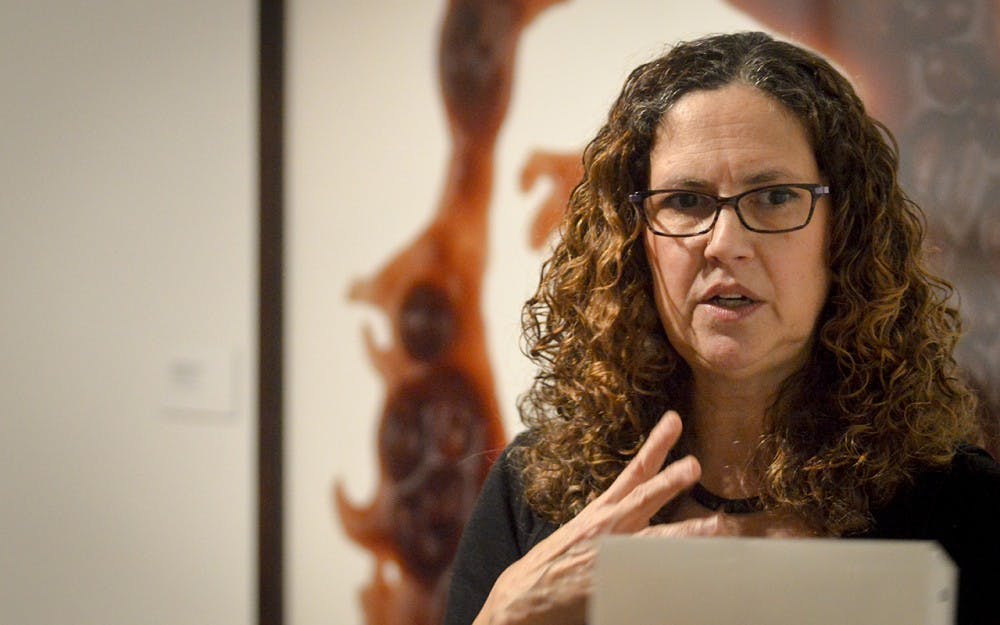The Eskenazi Museum of Art invited a speaker to discuss her take on artist Vik Muniz as an activist in front of students and members of the Bloomington community for the “Noon Talk” series.
Yara Clüver, visual artist and associate director of the Collins Living-Learning Center, gave the Noon Talk. Clüver was first drawn to Muniz’ work when seeing his photographs in a book.
“I thought they were interesting mostly because of the materials,” Clüver said.
Muniz is known for using obscure objects and materials to create his masterpieces. In some of his art he used black beans, peanut butter, jelly, wire and trash. The series Clüver focused on first showed Muniz’ use of sugar crystals.
Another idea that Muniz works with involving material is the idea that, up close, a viewer can see the materials used, but far away the viewer sees what the photo is supposed to be. Phil Stafford, retired director of the Center on Aging and Community, found this also to be true with seeing problems within local and global communities.
“Up close you see how it’s made, and when you get back you have a different type of meaning,” Stafford said. “That’s the same challenge that is associated with change — from the global to the local.”
“Sugar Children” is a series containing six photographs that connects the history of sugar in Brazil to the people Muniz had met when in Saint Kitts in the Caribbean.
Clüver discussed the relationship between Muniz and the children on the island. Once he was introduced to the parents he realized the difference between the two groups was pronounced because of the parents’ work on the sugar plantation.
“He realized then that the hard lives of the parents were plantation workers working 16 hours a day,” Clüver said. “They had a hardness to their life, sort of a bitterness and hardness to their life, which was in stark contrast to the experience he was having with the kids.”
Clüver then said Muniz used sugar crystals for their texture and volume and representativeness of the parents’ labor.
Through time Muniz’ work became more inclusive for those involved with his project. He continued to work with children in different forms of art, displayed in the series “Invisible Objects.”
The children Muniz worked with were fresh off the streets, Clüver said. Muniz had to work hard at breaking down their exteriors to connect with them. He wanted to because he realized they had lost their imagination.
Clüver went on to say Muniz had the children pose holding an imaginary object. This pose was to lead the children to imagine and feel what kind of object they would hold. This would let them dream and imagine.
“Because of the way these kids were living on the streets, they had lost the ability to imagine,” Clüver said. “They had lost that desire to or were not aware that any sort of dreaming of a future for themselves outside of the streets.”






